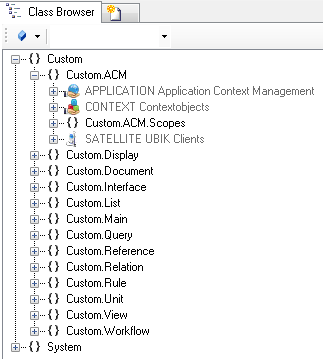Difference between revisions of "HowTo:Create a new Context"
m (moved Create a new Context to Create a new Context) |
|||
| Line 18: | Line 18: | ||
== See also == | == See also == | ||
| − | * [[Create a new Application]] | + | * [[HowTo:Create a new Application]] |
| − | * [[Create a new MetaClassScope]] | + | * [[HowTo:Create a new MetaClassScope]] |
| − | * [[Create a new QueryScope]] | + | * [[HowTo:Create a new QueryScope]] |
[[Category:How-To]] | [[Category:How-To]] | ||
| + | [[Category:Application Context Management]] | ||
[[Category:UBIK Studio]] | [[Category:UBIK Studio]] | ||
Revision as of 10:48, 29 January 2015
On the Context level the hierarchical structure of the objects is defined via an according View object. A context is one part of the complete ACM.
- Navigate to the MetaClass CONTEXT in the Class Browser
- Create a new instance using the Bulk Editor
- Assign a view object to the context's VIEW property either by
- dragging and dropping a view object onto the cell
- selecting the desired view from the dialog appearing after double-clicking the cell
- It is recommended to set at least name and description
- Save the changes with Ctrl+S or the save command
Properties
DATETIMEFORMAT (optional)
Configure a user specific date / time format to be used for visualizing date / time values on the client.
METADEFINITION (system)
If the MetaDefinitions are evaluated and released via the ACM Manager the system stores the value here.


